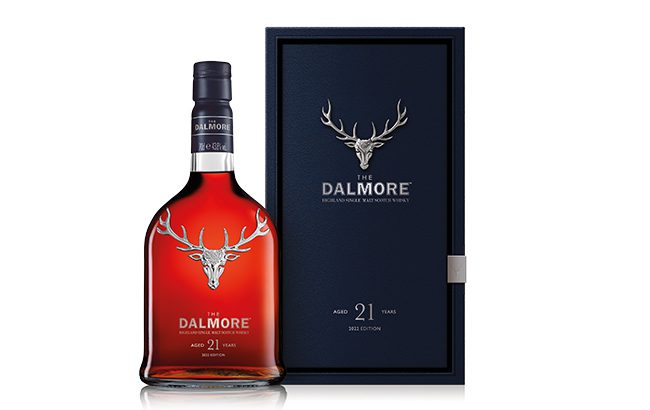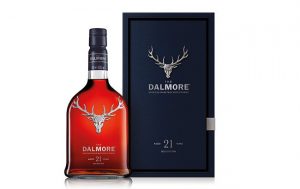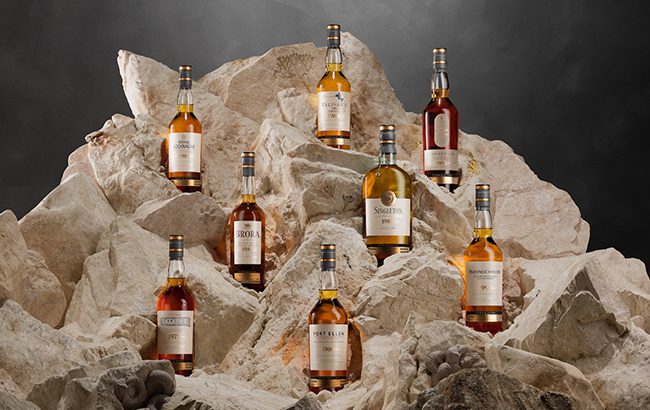 Born in 1792 in a bucolic corner of Massachusetts, a young man with the unusual name of Orsamus Willard became America’s first celebrity bartender, earning a reputation that went far beyond Manhattan. The transformation of Willard, caricatured here, from farm boy to “The Napoleon of Bar-Keepers,” however, proved to be reversible.
Born in 1792 in a bucolic corner of Massachusetts, a young man with the unusual name of Orsamus Willard became America’s first celebrity bartender, earning a reputation that went far beyond Manhattan. The transformation of Willard, caricatured here, from farm boy to “The Napoleon of Bar-Keepers,” however, proved to be reversible.
Orsamus was the seventh of the eight sons of William and Patience Hazelton Willard of Harvard, Massachusetts, shown below. It was a farming township 25 miles west-northwest of Boston. The family lived in what was described as “an old house” on the edge of a settlement known as Shabikin. Educated in local schools, the boy was too far down the line of inheritance ever to expect to share in his father’s farm land. For a time Willard languished in a poor-paying local teaching job but wanted a better opportunity. At age 19, he left home to create a new life in New York City.
 Young Willard was fortunate enough to find it at The City Hotel (1794-1849), called “the first functioning hotel in the United States.” Located at 123 Broadway, now the Manhattan financial district, the building was five stories and had 137 rooms. For decades City Hotel, shown here, was New York’s principal site for prestigious social functions and music events. In addition to its plush accommodations tje hotel featured a ballroom, shops, coffee house and, importantly for Orsamus, a lobby barroom.
Young Willard was fortunate enough to find it at The City Hotel (1794-1849), called “the first functioning hotel in the United States.” Located at 123 Broadway, now the Manhattan financial district, the building was five stories and had 137 rooms. For decades City Hotel, shown here, was New York’s principal site for prestigious social functions and music events. In addition to its plush accommodations tje hotel featured a ballroom, shops, coffee house and, importantly for Orsamus, a lobby barroom.
Starting as an office boy, Willard quickly impressed the hotel management with his energetic and intelligent approach to hotel duties. Able to write with either hand, his dexterity was noted as a skill that, accompanied by his outgoing personality and “urbane and courtly” manners, fitted him to become the hotel’s principal bartender, a position he held for almost 27 years.
An 1894 history of the Willard family was lavish in its description of Orsamus’ abilities: “He acquired a wide reputation for…his never failing memory of names, persons, and events. He was known even across the Atlantic as the [bartender] who never forgot the face or title of anyone who had ever been his guest. He…possessed in a remarkable degree the power of giving politely prompt and satisfying answers to the multifarious questions of guests, without interrupting the bookkeeping or other business details upon which he might be engaged.”
 Just as important, Willard could whip up one helluva good cocktail. David Wondrich, who has written extensively on early American bartenders, provides this observation: “As one patron recalled: ‘Willard was one of the first in the city to concoct fancy drinks, and he introduced the mint-julep as a bar drink,’ frequently mixing them up three or four at a time.” Among his other specialties were Whiskey Punch, Apple Toddy, and Extra-Extra Peach Brandy. Wondrich quotes an English traveler who observed (with some exaggeration) that Willard’s name was “familiar to every American, and to every foreigner who has visited the States during the last thirty years [as] the first master of his art in the world.” Willard was anointed the “Napoleon of Bar-Keepers.”
Just as important, Willard could whip up one helluva good cocktail. David Wondrich, who has written extensively on early American bartenders, provides this observation: “As one patron recalled: ‘Willard was one of the first in the city to concoct fancy drinks, and he introduced the mint-julep as a bar drink,’ frequently mixing them up three or four at a time.” Among his other specialties were Whiskey Punch, Apple Toddy, and Extra-Extra Peach Brandy. Wondrich quotes an English traveler who observed (with some exaggeration) that Willard’s name was “familiar to every American, and to every foreigner who has visited the States during the last thirty years [as] the first master of his art in the world.” Willard was anointed the “Napoleon of Bar-Keepers.”
One of many anecdotes about him indicated Willard’s sense of humor. According to the New York Times, a visitor once walked up to his bar and ordered a brandy and water. Willard, as was his custom, handed him the decanter and indicated the pitcher of water on the bar. The gent thereupon filled the tumbler with brandy, added a couple drops of water, and tossed the drink down in one gulp as Willard looked on in amazement. After he put his payment on the bar, the customer was astonished when Willard returned most of it in change and said to him: “You don’t pretend to say they only charge three cents for a glass of liquor at the City Hotel?” “No,” answered Willard. “We retail it at a shilling a glass but when we sell it wholesale we make a discount.”
For all his acclaim, Willard’s life must have been a lonely one. Usually working from dawn to late night at the lobby bar, he is said to have left the hotel only very infrequently. He lived in a single room at the hotel, serving people whose preferences he remembered but who in reality were not his friends. One author has noted that: “His geniality was not professional only, but had it source in a kindly heart.” He added that Willard “…was a great favorite of children and loved to have them about him.”
Now in his early forties and still a bachelor, Willard apparently yearned for a wife and family. Ignoring his fame, in 1836 he retired from bartending at the City Hotel, went home to Harvard, and returned to farming. There Orsamus met Martha Stearns, the daughter of S.S. Houghton of Bolton, Massachusetts, a nearby community. When Willard left home she had been a three year old toddler. They married in Bolton in December 1837. Their first child, a girl named Martha, was born three years later, followed the next year by a boy, Orsamus Jr.
But the Big Apple was not finished with the Napoleon of Bar-Keepers. In 1828 John Jacob Astor bought the City Hotel and gave it to his granddaughter, Sara Langdon, as her marriage dowry. Neither she nor her husband appear to have been capable owners and after Willard and other management personnel left the hotel, it faltered financially. In 1843 a frantic message and appealing salary offer brought Orsamus back to New York again to run the City Hotel lobby bar. The event was newsworthy enough to persuade The New York Dramatic Mirror to send a reporter to the scene:
He wrote: “All was right with the world. Willard was in his place behind the bar, a little fatter than of old and somewhat gray with cabbage growing, but his wonderful memory of names and faces seemed full of vigor, and what with the tone of voice, the dexterity of furnishing drinks, the off-hand welcome to two every comer-in, and the mechanical answering of questions and calling to servants, he seemed to have begun precisely where he left off, and his little episode of farming must have seemed to him scarcely better than a dream.”
 All, however, was not “right with the world.” Saving the City Hotel, now far fallen from its heyday, would take more than Willard could accomplish. By 1848, Sara Langdon determined to tear down the venerable hostelry and replace it with a block of stores and offices she called the Boreel Building, named after her husband. Likely with feeling of relief, Willard retired a second time and returned to Harvard and the farm. A second son, Charles, would be born there in 1850.
All, however, was not “right with the world.” Saving the City Hotel, now far fallen from its heyday, would take more than Willard could accomplish. By 1848, Sara Langdon determined to tear down the venerable hostelry and replace it with a block of stores and offices she called the Boreel Building, named after her husband. Likely with feeling of relief, Willard retired a second time and returned to Harvard and the farm. A second son, Charles, would be born there in 1850.
As noted earlier, as the seventh in a line of eight sons, Orsamus could not have expected any inherited land from his father. His three oldest siblings, however had died in infancy, ultimately giving the family inheritance to John Willard, the fourth in line. Ignoring other brothers, none of them married, when he died John bequeathed his property to Orsamus. Now owning a substantial tract of land Willard fulfilled his dream of raising and breeding cows.
The erstwhile bartender also was able to build three homes on property in an area of Harvard township called Still River. This was an agricultural settlement located on a well-traveled thoroughfare that connected Harvard with Lancaster to the west and Bolton to the south. Willard divided the parcel into three smaller farms, each with a modest house, barn and outbuildings. With his wife Martha, Orsamus lived in one house and gave a second, immediately north, to Orsamus Junior for his residence. Willard’s home, the story goes, had room numbers on every interior door, apparently as a reminder of his palmy City Hotel days.
After living his life out as a farmer and small time cattle breeder, Willard died in 1876 at the advanced age of 84 and was buried in a hillside not far from his home. In time, Martha and other family members would join him there. The couple’s joint monument is shown below.
 Orsamus Junior’s homestead would pass though several hands until 1992 when the owner sold the cottage, barn, and 4.5 acres of wooded land to the Harvard Historical Society to be converted into a museum reflecting the early history of the area. Shown here, the present status of what is known as the Willard-Watt house is unclear.
Orsamus Junior’s homestead would pass though several hands until 1992 when the owner sold the cottage, barn, and 4.5 acres of wooded land to the Harvard Historical Society to be converted into a museum reflecting the early history of the area. Shown here, the present status of what is known as the Willard-Watt house is unclear.
An old saying advises: “You can take the boy out of the farm, but you cannot take the boy out of the farm.” My own family experience validates the truth of that saying, as does Willard’s life story. Here was a man who made it to the mountain top of recognition in “New York, New York,” and well beyond as a celebrity bartender but was willing to give it up for a quiet agricultural life with family in a rural corner of Massachusetts. By ignoring fame Orsamus Willard truly demonstrated a special kind of genius.
Note: This post owes a great deal to David Wondrich, who has made the early bartenders of America a special subject of attention of his writing. His article on five early U.S. bartenders is available on the Internet and recommended reading, along with his 2007 book, “Imbibe.” Through other internet sources I have been able to fill out Willard’s personal and farming life in rural Massachusetts. The image of Orsamus that opens this post is from a quilt portrait by Ken Ellis, an artist who specializes in this art form.









